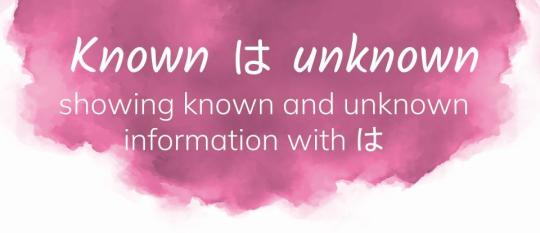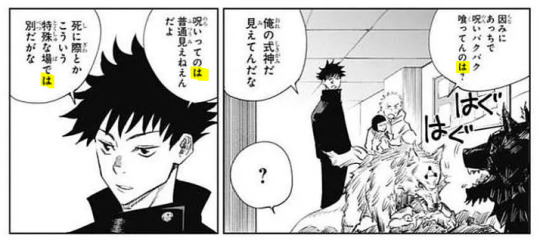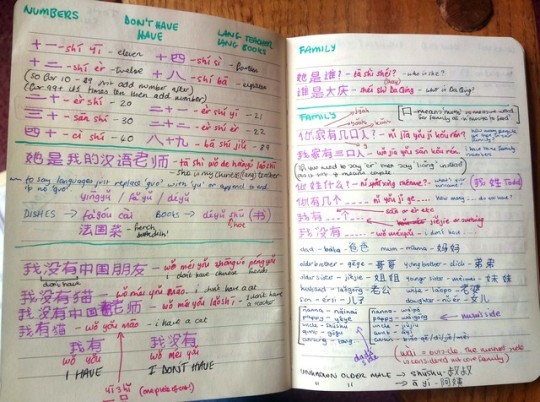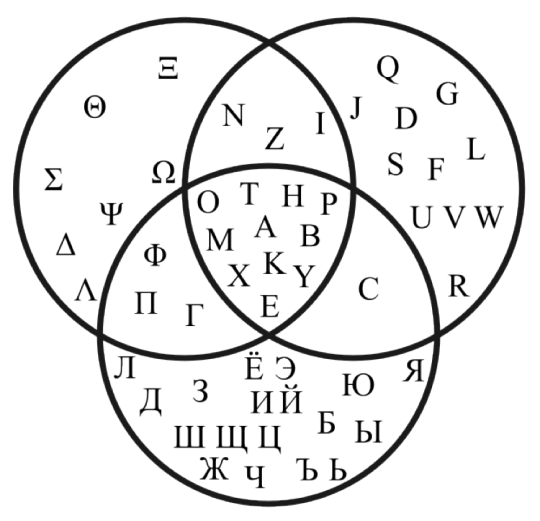#lang blr
Text
Language Learning Journey Update
It's been a while since I've been on Tumblr! In the months I've been away, I was focusing heavily on Persian and strengthening my skills in all areas of the language before I switch to a maintenance phase and pick up another language. During this time, I also got really into planning and journaling which has helped me better structure language learning in my schedule as well as reflect on how best to structure my time.
I certainly learned a lot from this time but the biggest takeaway for me is that my biggest pain point when learning a language is acquiring vocabulary. I tend to let it happen rather naturally (slowly) and while it's a valid method, it also leads me to stagnate and plateau. That's why, with the change in my language learning plans, I've also restructured my learning schedule (for, like, the millionth time).
Learning Two Languages Simultaneously
I was originally planning on (re)learning Korean after going through the intensive 3 months of Persian but recent developments in my professional life have pushed me to start learning Cantonese instead. My goal for Cantonese is mostly to reach a decent listening comprehension level and a basic speaking level.
Although I'm learning Cantonese from scratch, I feel that I still have a long way to go with Persian. I am not ready for a traditional maintenance phase, but I know I am close to burn out and have to dial it back. The schedule is structured around Persian and I fill the rest of the time I was using for Persian previously, for Cantonese.
ON/OFF Weeks System
This system was inspired by my need to find a different way to learn and focus on vocabulary while also avoiding burn out in Persian.
ON Weeks: These are weeks where I will be focusing on 1 skill in Persian in the mornings. For example, on Monday, I will be reading intensively (e.g., breaking down phrases, re-reading, translating, compiling vocabulary) for about 25 minutes. In the afternoons, I am working on getting exposure to Cantonese and learning the sound system.
OFF Weeks: These weeks involve only practicing the Persian vocabulary I accumulated during the ON weeks. I'll be re-reading them, defining or looking up words on Forvo, writing practice sentences, uploading them to HelloTalk, and correcting them. I also do some light, passive activities like listening while I clean something or reading for a few minutes without stopping to translate.
Off weeks don't really change much in the way of Cantonese. I will continue with my plan as is.
Maintenance languages: I do have to maintain French and Spanish, however, I am lucky that I interact with languages almost on a daily basis. When I foresee that a day may be void of one, I'll stack it with another hobby of mine (e.g., journaling in Spanish or reading in French).

An ON week coming up.
Tools pictured: Night owl by Owl Paper Co planner, Asvine P50 fountain pen, Tombow Fudenosuke hard tip brush pen, Zebra Mildliner highlighters
#the update nobody asked for#language learning#language tumblr#langblr#language blog#languages#studyblr#persian#farsi#cantonese#french#spanish#english#lang blr#language blr#vocabulary#study#i may update how things go as I start this system
21 notes
·
View notes
Text
ランダムな漢字を読んで
ランダムな漢字を読んで、その意味を知ることができてとてもうれしいです。
#sofiaflorina#japanese language#japanese langblr#learn japanese#learning japanese#japanese learning#kanji#japanese kanji#日本語#日本語の勉強#日本語勉強#language learning#learning language#languages learning#learning languages#language blr#language blog#lang blog#langblog#langbr#langblr#language study#language#languages#language stuff#polyglot#polyglots#polyglot community#japanese studyblr#漢字
2 notes
·
View notes
Text
The internet has its downsides but wow we live in a world of information and do you know how wonderful that is for language learning? I have access to innumerable shows, subtitles, books, comics, songs from different languages. I found a site that teaches Chinese to children. I’m reading a manga series that’s out of print. No matter how hard you try, no matter how well written a book is, you just can’t learn a different language from text alone. Life is beautiful
1 note
·
View note
Note
THE LAST ASK U ANSWERED WAS FROM ME... and yes idk kung akin lang but habit ko na ang i-search yung blog niyo every hour tapos kahit "li" palang natatatype ko lumalabas na blog niyo kaya kinabahan ako kanina nung di kayo nalabas. ssend ko sana pic kaso naka-off pala dms niyo sa twt >< -🏁
last ask
huhu unfortunately, sb nga kami 😭 sabi sa ibang posts and advice na nakita namin usually hours lang bago maaksyunan ni tum/blr pero meron rin 'yung iba 2-11 days tapos 'yung iba one month 😭 jusko, kinakabahan ako HDBXXGGV we're currently making a backup in case hindi na talaga kami bigyan ng another chance huehue
3 notes
·
View notes
Text
French lang blrs suck elephant ass. Grow up, Cheryl. Get new material.

0 notes
Photo

Particles が & は- a different perspective
Disclaimer*
I’m learning Japanese. Don’t take this as the ultimate guide to the Japanese particles!
I already made a post about these particles (here and here) long time ago, but it was at the begining of my journey with Japanese and I’m not sure if I knew what I was doing back then (it’s not like I know now tho lol)
Feel free to correct me!
Combination #1 (more to come!)
[known information] は [unknown information]
To determine whether something is known or unknown, you need to closely analyze the context. Japanese is a highly contextual language and I often catch myself analyzing something without considering the context first. I hope that grammar rules will somehow explain everything to me. Analyzing the context also helps with reading comprehension. The use of a certain particle very often hinges on what was said before or is just known or unknown information by the character or you or your listener.
私はポーランド人です.
私は – known information
ポーランド人 – unknown information
Context:
I’m standing in front of you and I’m introducing myself. 私は is considered as known information because you can see me. You know exactly who is speaking. However, you know nothing about me. I’m giving the unknown information – ポーランド人です。
あなたは誰ですか?
Context:
You’re standing in front of me, so you’re known information to me. There is something about you that I don’t know, though. You’re providing me with the unknown information.
このアニメはどう?
Context:
We both watched the same anime. We both know what anime we’re referring to. But I don’t know what you think about it. You’re supplying me with the missing bit of information.

Examples from Jujutsu Kaisen manga

Context:
Yuuji and Megumi just arrived in front of the school. Yuuji can feel the pressure given off by the curse. It’s known information to both the reader and Yuuji. We can see the dark shadows around the school. “(Damn) … the pressure…” So, I truly believe that in this case は matches the use of English definite article ‘the’ which is also used when both you and the reader / your listener know (see, hear, etc.) the noun in question.

Context:
Yuuji is asking about Megumi’s divine dogs.
因みにあっちで呪いパクパク食ってんのは?
They both can see the divine dogs, so it’s known information to both. Megumi is supplying Yuuji with the unknown information (they are my shikigami)
呪いってのは
Speaking of… the thing that we both know now. The rest of the sentence is the unknown information – it’s not common to see the curses.
The third は also shows us known and unknown information.
死に際とかこういう特殊な場では別だがな
Except on deathbeds and special occasions like this.
Both of them (including us) know what a ‘deathbed’ means and the current situation is. Megumi gives us the missing information. (However, in this case we could also apply the contrastive rule of は which always hinges on the context. Contrastive は always introduces some implicit or it could be even explicit information – you normally don’t see curses HOWEVER [contrast] when you’re about to die, it’s a different case).
37 notes
·
View notes
Text
Genuine question for native English speakers (or anybody who knows the answer):
Why do you say "I am gay/bisexual/pansexual/straight/etc" and if you are a lesbian you say "I am a lesbian"? Why do you have to put that "a"? Is there an historical reason? Is it considered offensive referring to someone as "a lesbian" instead of "a gay person"? I mean, gay, pansexual, straight, etc are all adjectives, but lesbian is a noun. Why? To my non native ears that "a" before "lesbian" sounds rude and quiet offensive. I was wondering if some native English speakers feel the same.
#i bet there's an historical reason#langblr#english#lesbian#gay#bisexual#straight#native english speakers#question#ask#lang blog#lang blr#lgbt
11 notes
·
View notes
Text


Chinese and Japanese study while I am mostly away with no Internet, I'm catching up on my study notes as I fell a little behind.
#language study#chinese language#japanese language#lang blr#i also downloaded some eps of sanyuu tantei tokage for while i am here to listen to some japanese and omg i love it!#i'll post about it once ive finished the show and am home#language learning
14 notes
·
View notes
Photo

Myrna Báez, Spectators
#curbside quotidian#art#lit#painting#puerto rico#myrna báez#myrna#báez#baez#spectators#artblr#art blog#bookblr#litblr#lang blr#studyblr
6 notes
·
View notes
Text
French Preposition
Depuis
Def. indicates the duration of an action of an action/situation
Ex. “Je suis ici depuis 2001″ “Elle était prête depuis trois heures quand je suis allée la chercher
Pendant
Def. indicates the duration of an action/situation
Ex. “Je suis restée en Angleterre pendant cinq jours” “Je fais du cours tous le matins pendant trente minutes”
Pour
Def. is used to project how long a specific action/situation will last in the future
Ex. “Je reste en Angleterre pour cinq jours”
Dans
Def. indicates the start of a specific action/situation which will tale place in the future
Ex. “Je vais en Angleterre dans cinq jours”
En
Def. indicates the amount of time it takes to complete an action
Ex. “Je fais mes devoirs en une heure”
Il y a
Def. an idiomatic expression meaning ago
Ex. “Je suis venue en France il y a cinq ans”
à
Def. used to express the time an event occurs
Ex. “J’ai rendez-vous à dixh”
ça fait
Def. indicates i’ve been
Ex. “ça fait cinq ans que je suis en France.”
355 notes
·
View notes
Text

#farsi#persian langblr#language blog#langblr#lang blr#language tumblr#language learning#language learner
26 notes
·
View notes
Text
Japan to Revise Official Romanization Rules for First Time in 70 Years
Hepburn romanization is the most widely used Japanese language romanization system but it is not standard in Japan itself. The Japanese government usually uses the Kunrei-shiki romanization, which is the standard since 1954.
Both are used simultaneously in Japan and this is sometimes quite confusing, especially when teaching children. Schools use the Kunrei-shiki style but in society Hepburn style is the most common. Geographic names and places are rendered with Hepburn style, and also, passports. Both have advantages and disadvantages.
Later I will explain the differences between these two along with other romanization systems for Japanese. But the most important thing is that Hepburn style followed the English pronunciation, not like Kunrei-shiki style.
In my opinion, making Hepburn romanization style as the standard doesn't really have an effect on Japanese language in general, it would only have an effect on Japanese society. Outside Japan itself, Hepburn style is the most widely used.
#japanese#japanese language#japanese langblr#japanese news#japan news#japan#romanization#language#languages#linguistics#language stuff#language blr#language blog#languageblr#lang blog#langblog#langblr#linguistics tag#hepburn#日本語#言語#言語学#日本#ニュース#日本語の勉強#日本語勉強#nihongo#japanese learning#learning japanese
1 note
·
View note
Text
trying this again
hey guys im Mo! I’ll be trying this again, gonna try and hold myself accountable and use this blog finally as a way to track my language process.
bear with me as i get my blog up and running, looking all cute, adding my posts to tags, etc.
if anyone is a native speaker/learning portuguese, asl, korean pls feel free to message me! I’d love to have some language partners to practice w!
any ling majors as well, pls like or reblog so i can check out your acc as well !!
thank u!! look forward to talking w you all!
#lang blr#langblr#studyblr#study#portuguese langblr#korean langblr#korean language#spanish#spanish major#ling major#linguistics major#ling humor#portuguese language#language partner#penpal#language buddy#language#languages
14 notes
·
View notes
Text

༄ Stardust, Lang Leav ˚✧₊⁎
#lang leav#quotes#poetry#poet#poets corner#english lit#literature#writeblr#writing blr#writing#memories#stardust memories#stardust#book#poetry book
54 notes
·
View notes
Text
Expanding your ABC’s for Global Literacy
Expanding your ABC’s for Global Literacy


The latin alphabet is by far the most pervasive writing system currently in use on the planet, spanning more than 130 major languages. Nearly everyone one has encountered, used, or at least heard of it. From this vantage point, the closest branching points and most obvious relatives are the Greek and Russian alphabets. There is significant overlap in terms of shared letters. All three alphabets…
View On WordPress
#lang blr#studyblr#languages#foreign languages#polyglot#hyperpolyglot#language learning#multilingual#multiculturalism#languagesmatter
0 notes
Text
BASICS
So tagalog is pretty much like “a - e - i - o - u” in a lot of pronounciations.
There are some instances where you press on a consonant when pronounciating.
No need to prolong vowels unless needed :)
When spelling, there is no “c”
Alphabet is no different from english
—————
So, i guess first word of the day !
“Kamusta ikaw ?” - (KA - MOO - STA I - COW) - How are you ?
13 notes
·
View notes